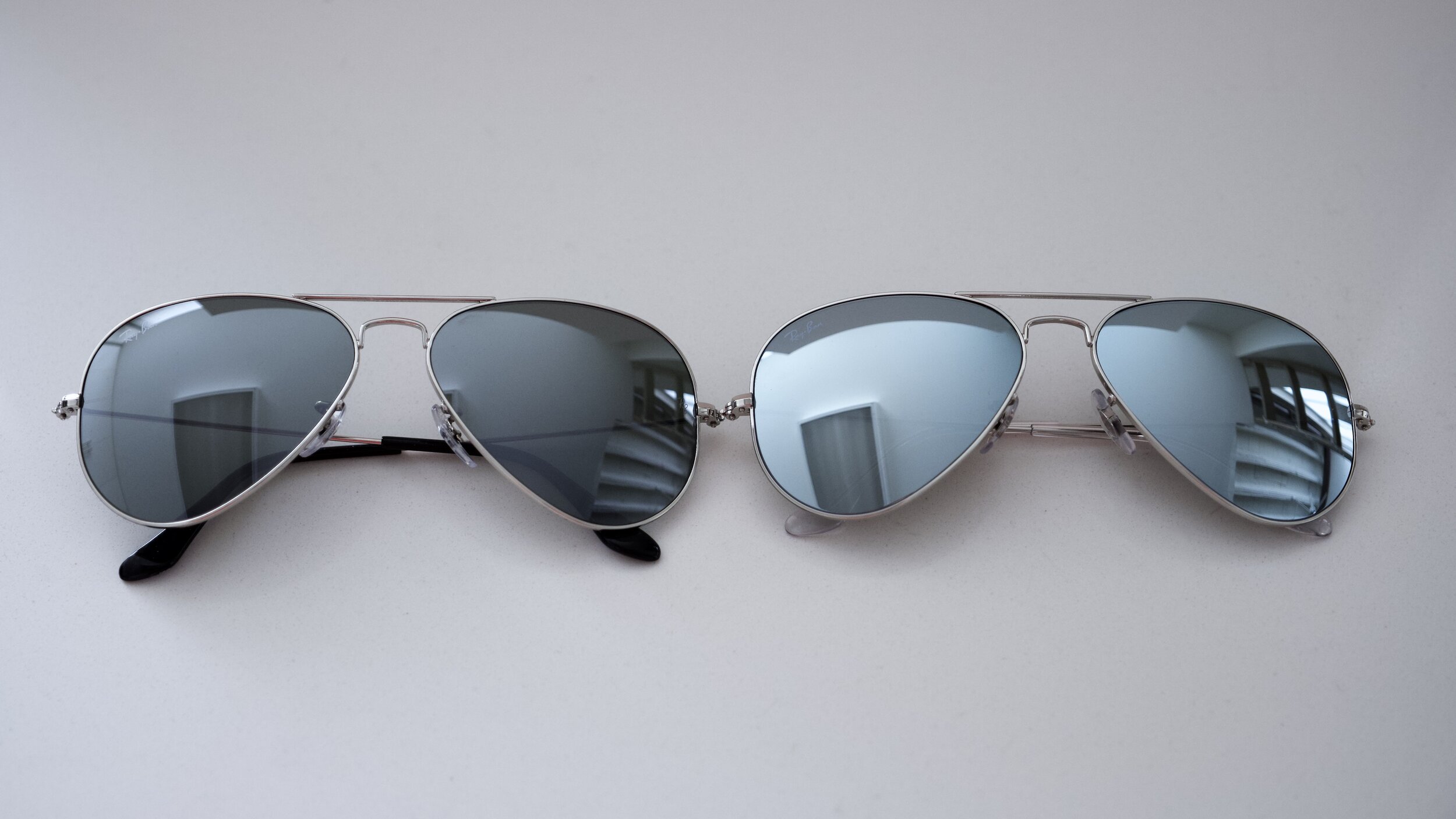Silver Mirror (left) vs. Silver Flash (right)
I love sunglasses. My friends tell me I have a problem. Maybe I do but my problem is your benefit!
I also love to debunk things and genuinely help people. My reviews are free and never have any ads nor do I get any money for recommendations. I also own or frequently use all items which appear in Adrian’s Gear or otherwise.
I want to help!
Recently, while looking at some sunglasses, I had never seen Ray-Ban’s Silver Flash or Silver Mirror in person. I wanted some absolutely mirror finish aviators but images on Ray-ban’s website don’t do them justice. Looking for some reviews of both were of absolutely no help. In fact, some literally are quoted saying “there is no difference.”
To find out for myself, I bought a pair of both. To put it simply, anyone who claims there is no difference has neither owned them nor looked at them in person, or maybe just making things up. They are definitely different.
Let’s clarify the differences between these lenses.
Silver Mirror—a highly reflective, dark gray, with a mostly mirror finish. I write ‘mostly’ because one’s eyes are not completely concealed from onlookers. The lenses I would say are 80% mirrored. They are also very neutral in their tint, meaning no nearly no color shift, and a medium darkness.
Silver Flash—like their colorful (Flash) brethren, they are extremely reflective and to the extent I would call them 95% mirrored. There is almost no seeing ones eyes through these lenses. The tint is very neutral and a little darker.
In pictures, due to exposure and other variables, it would be hard to say which is which looks like what but the image above represents a good everyday experience. But if you want a truly mirror finish on a pair of Aviators, Silver Flash is the way to go. Something a touch more subtle, the Silver Mirror is a better choice.
If you want an example, watch the film Terminator 2: Judgement Day. While that might be an unexpected recommendation, the T-1000 sunglasses about two-thirds way through the film are what I would call ‘silver flash’.
Personally, I really like both pairs of sunglasses but the Silver Flash are really the way to go. They are beautiful.
Feel free to ask any questions about them in the comments and I’ll give as much detail as I can. Thanks for reading!


